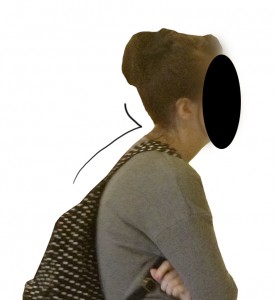1. Myth – Healthy posture takes a lot of strength to maintain.
We have the mistaken impression that “proper” posture is overly rigid and stiff, that it is uncomfortable and difficult to achieve. Most of us believe that having good posture means pinching the shoulder blades together and puffing out the chest. We believe that proper alignment is something that requires discipline and deprives the body of relaxation. It is true that stiff and uncomfortable positions are difficult to maintain and cause fatigue. But aligned posture is not stiff and uncomfortable. Just the opposite. Proper alignment promotes relaxation and should be easy to maintain for long periods of time. It is rejuvenating, natural, and relaxing.
2. Myth- Healthy posture involves puffing out the chest.
The puffed out chest is called “military posture” and is not comfortable or healthy. Its not a position that many people can maintain for an extended period of time without feeling back pain due to overworked muscles and exaggerated spinal curves.
Since the goal of good posture is relaxation, you want to find a comfortable and restful position for the chest. Allow the lower ribs to come down into the body so that the rib cage is not angling backwards. You will immediately feel a straightening of the lower back.
3. Myth – Healthy posture means pinching the shoulder blades together.
Again, this is not a relaxed position. Not only will it cause pain and muscle fatigue, but it will also encourage you to flare the lower ribs and assume “military posture”. Instead of pinching the shoulder blades, do a few shoulder rolls. One side at a time roll the shoulder forward, up, back and down.
Then just relax. Take a few deep breaths and imagine your shoulders getting farther apart with each exhale. Try to make your upper back wider. Find a place of relaxation while you allow the shoulders to open up and fall away from the ears.
4. Myth – Healthy posture means lifting the chin.
Notice the head position of the woman in the photo to the right. Her neck is jetting forward and her head is tilted way back. The angle caused by the neck meeting the skull is so severe that she would be looking at the sky if her neck was vertical. The forward head and crunched neck is almost always accompanied by a rounded upper back and forward shoulders.
Holding the head out of alignment causes the muscles of the neck and shoulders to work overtime. Think of reaching your neck long toward the sky and letting your head nod slightly forward. You are in the right position when your ear and eye are on the same horizontal plane.


